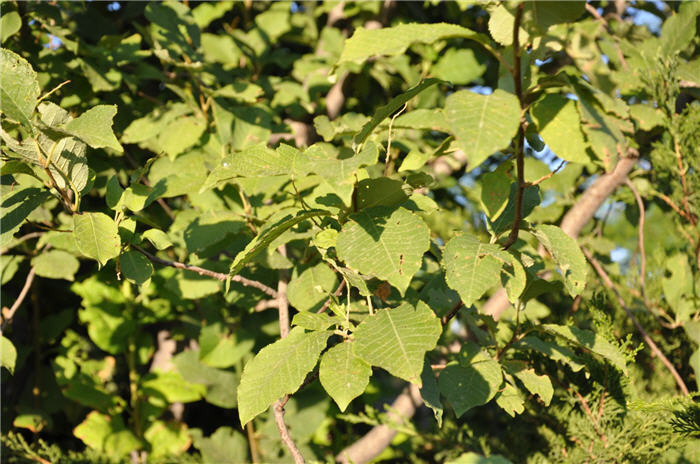| Botanical Name: Prunus virginiana | |
| Common Name: Common Chokecherry |

-
Anatomy
-
Culture
-
Design
Plant Type
Tree, Shrub
Height Range
12-25'
Flower Color
White
Flower Season
Spring
Leaf Color
Green
Bark Color
Brown, Red
Fruit Color
Black, Purple
Fruit Season
Summer
Sun
Full, Half
Water
Medium
Growth Rate
Moderate
Soil Type
Clay, Loam
Soil Condition
Average, Rich, Well-drained, Moist
Soil pH
Neutral
Adverse Factors
Invasive
Design Styles
Mediterranean, Ranch, Woodland
Accenting Features
Fall Color, Fragrance, Showy Flowers
Seasonal Interest
Spring, Summer, Fall
Location Uses
Background, Shrub Border, Walls / Fences
Special Uses
Erosion Control, Hedge, Screen, Mass Planting, Naturalizing
Attracts Wildlife
Birds, Wildlife
Information by: Stephanie Duer
Photographer:
Photographer:
-
Description
-
Notes
Chokecherry is large shrub or small tree typically growing to 15 to 20 feet tall and 10 to 15 feet wide, with an irregular, oval-rounded crown. It also may be found in shorter heights as a large shrub. Fragrant, cup-shaped, white flowers appear in elongated clusters to 3 to 6 inches long in mid-spring. Flowers give way to clusters of globular, pea-sized berries that ripen to dark purple/black in August. Fruits are technically edible, but are astringent (hence the common name) but can be made into jams, jellies, pies, and sauces. Fruits are very attractive to many birds and animals. Elliptic leaves with sharply toothed margins are dark green above and gray-green beneath. Fall color is golden yellow to orange. Although a Utah native and common in the wild in many parts of the U. S., the species is infrequently sold in commerce, though ‘Schubert’ and 'Canada Red', both purple-leafed forms, are commonly available. It will sucker, and so is most useful where that quality is of value, such as in naturally styled gardens or restoration areas.
Grow in average, dry to medium, well-drained loams in full sun to part shade. Best flowering is in full sun. Plants will sucker to form colonies, promptly remove suckers to prevent any unwanted spread. It can tolerate moderate drought once established, but grows best were it reseems periodic summer watering. Prune selectively if needed; will require removal of suckers and lower branches to be maintained as a tree. A Utah native.